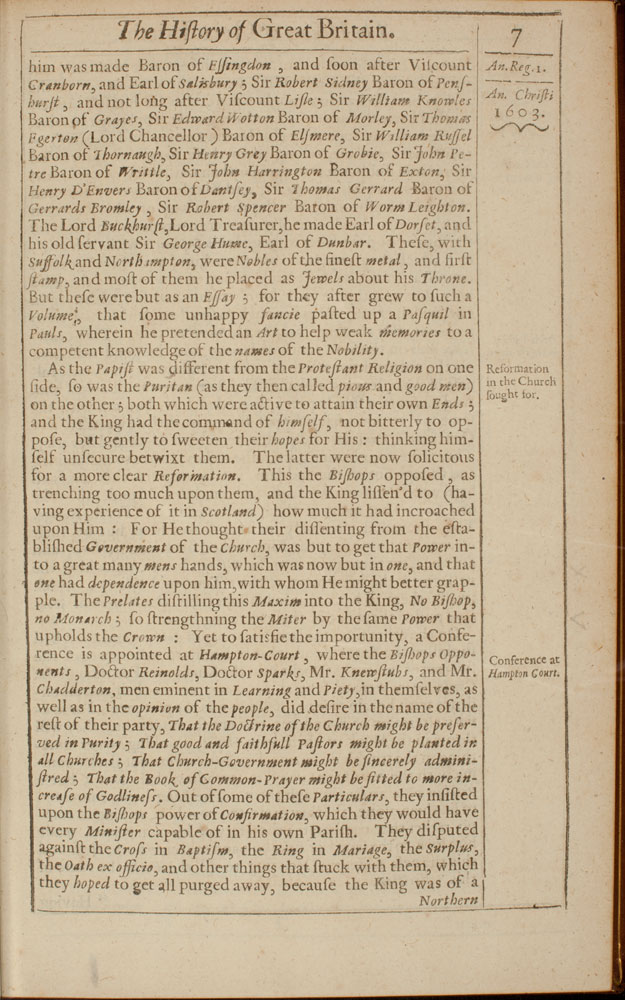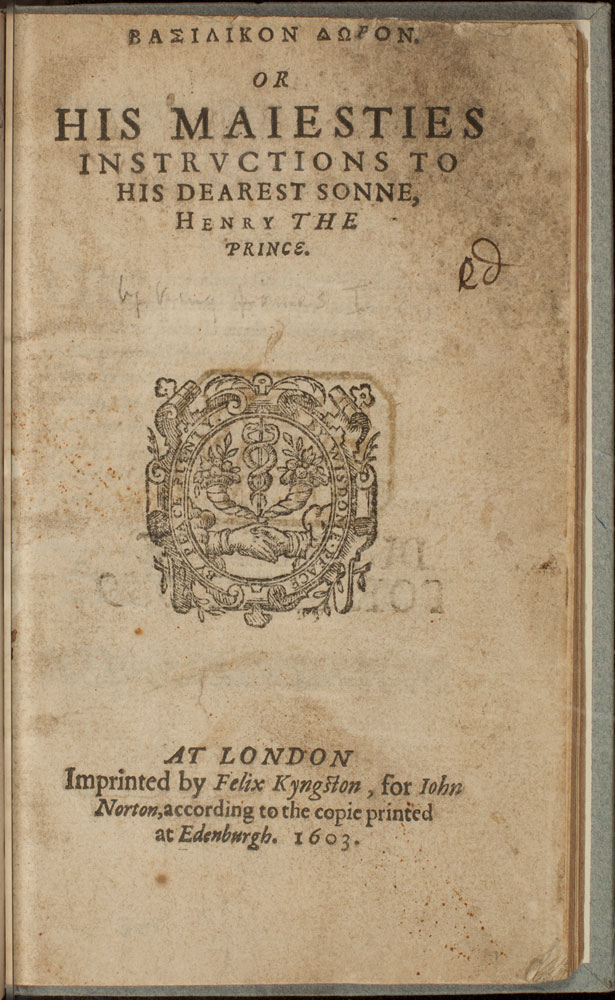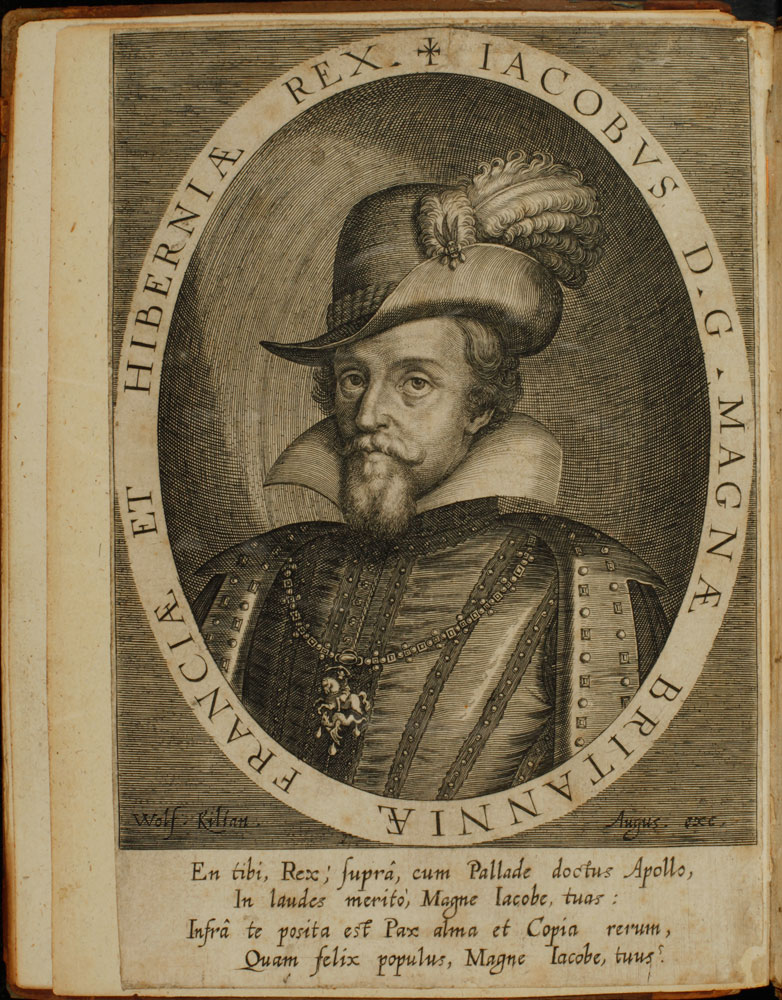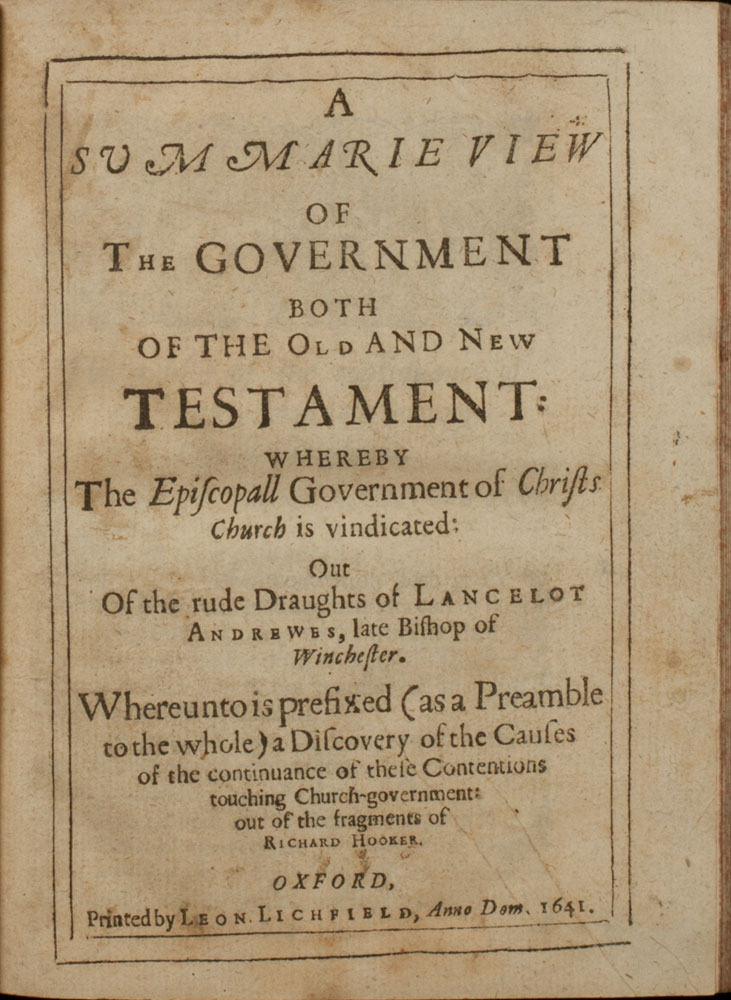Why the King James Version?
This history of James I's reign in England describes the events of the Hampton Court conference held in January 1604 in which James heard the religious disputes between the Puritan and Anglican factions. The account makes no mention, however, of the decision to proceed with a new translation of the Bible.
When James I acceded to the throne in 1603, tensions between the conservative elements of the Church of England and the Puritan reformers were high. The Puritans hoped that the new king would be supportive of their reform efforts. In truth, James abhorred many of their views, especially their denial of the divine authority of kings. He believed the Puritans and the Geneva Bible were hostile to the monarchy, while the Church of England reinforced the king's authority.
In 1604, James convened an assembly of leaders from the Church of England and the Puritan faction at Hampton Court to allow them to air their grievances and talk about ecclesiastical reform. James did not approve of the Puritans' propositions, but when they mentioned a possible new Bible translation, James jumped at the suggestion. While the Puritans may have wished for a revision of the Bishop's Bible, instead, James sanctioned a new translation entirely.
James was crowned king of Scotland in 1567, at the age of thirteen months. "Basilikon Doron" is a Greek phrase meaning "The Kingly Gift." This treatise on good kingship discusses the roles and responsibilities of a just king and how a king should govern himself in his daily life. First printed in 1599, the work was reprinted in London in 1603 to help acquaint the English with James, who inherited the English throne from Elizabeth I.
This portrait of King James I has been inserted into a mourning poem written upon the king's death. The poem, titled "A Living Sadness," was written by a Londoner named John Taylor, who earned his living through writing and by ferrying passengers along the Thames River.
A prominent Anglican bishop and renowned preacher, Andrewes (1555-1626), would chair the company of King James Bible translators responsible for Genesis through II Kings. In this pamphlet, he argues that the Bible proves that Christ's church is organized around bishops, rather than congregations—one of the greatest religious controversies of the day and one that the King James Version was meant to address through its use of language.



